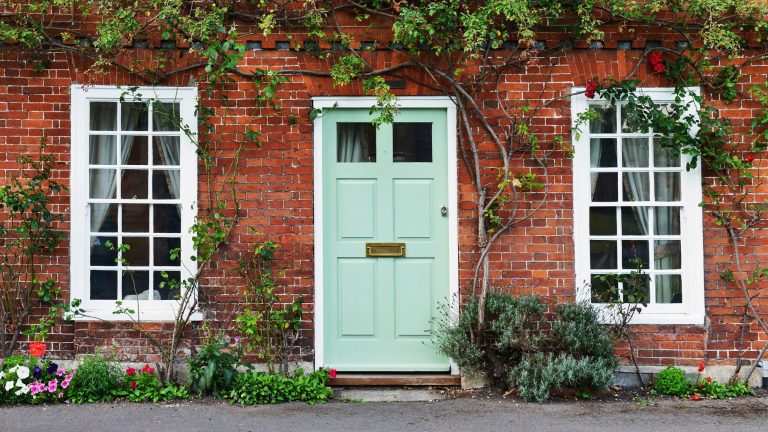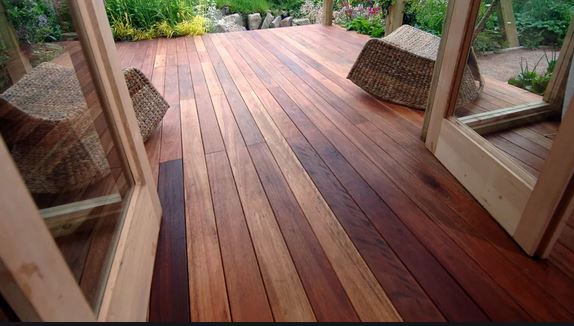The impact of a front door on a home’s kerb appeal September 2020 was a month of records for the UK housing market. The stamp duty holiday triggered the highest number of residential property sales ever agreed in a month. When selling or looking to purchase a house, first impressions really do count. Here, Nick Cowley, managing director of uPVC windows and uPVC doors manufacturer Euramax, explains the impact of a carefully selected front door on a home’s kerb appeal. Homes are selling faster than ever before in the UK. The average time to sell is 50 days quicker than any previously recorded figure, according to a report by real estate website Rightmove. In such a saturated market, it’s vital that a property stands out, for the right reasons. In the initial stages of selling a property, the exterior appearance holds great importance: the front exterior shot of a home typically takes centre stage on online listings and many prospective buyers will make an informal drive-by visit before requesting a viewing. With such a great focus on the home’s exterior, maximising kerb appeal is a crucial element of a successful exchange. Whether a homeowner is enhancing their property’s sellable status, or plans to remain there for years to come, the front door is commonly regarded as a property’s focal point, connecting the inside with the outside. It should reflect the personality of the home, and can provide a subtle hint towards the interior décor inside the property. Selecting a front door that successfully achieves this requires three key decisions: colour, material and design. Colour choice A front door’s colour is ultimately down to personal preference, but there are a few essential considerations that should be made when creating a stand-out first impression. The goal is to radiate a welcoming feel, which can be reached either by adding a new colour or by maintaining the property’s existing colourway. One of the most popular colours to add to a property is a pale green. Inspired by nature, this hint of colour subtly matches any surrounding foliage. This promotes a view of the house and its garden as a single entity, helping the home to blend in with its exterior environment. Alternatively, neutral shades bring a classic and sophisticated style to any property. Recent years have seen a rise in the popularity of grey interiors, so selecting a grey front door complements the interior décor and sets the tone of what’s to come if you were to enter through it. It’s also worth taking the style of the property into account, to ensure the door colour helps rather than hinders the home’s aesthetic appeal. For example, dark colours such as Anthracite grey may be too bold for ornate period homes, but the perfect fit for a modern or Tudor-style property. Considering all these points in advance gives homeowners some creative freedom with their door colour, without compromising on style. Material matters Material is not only key to a door’s aesthetics, but also its functionality. Meeting a door’s aesthetic goals should not come at the expense of performance. Ultimately, a front door must provide security without sacrificing energy efficiency, so material choice should support these performance objectives. A traditional material choice would be timber, thanks to its timeless look and customisability. There are many types of wood to select from and it can be painted any colour. However, timber comes with its downsides. Repeated exposure to harsh weather conditions can cause warping and peeling, hampering the door’s insulating properties and demanding periodic maintenance. PVCu is another material option, which outperforms timber on energy efficiency and maintenance. PVCu doors have a smooth finish that is naturally insulating and weatherproof, requiring minimal maintenance. Contrary to popular belief, PVCu doors are now available in a range of colours, including Anthracite grey and Chartwell green. Their sleek, clean appearance makes PVCu doors an ideal option for modern properties. However, the modern appearance of PVCu may look out of place on a traditional property, while timber doors may not meet all the performance goals. Composite doors combine the benefits of different materials to offer maximum security, unrivalled energy efficiency and virtually zero maintenance. With a variety of colour choices and the option to add a woodgrain effect, composite doors are suitable for any home, whatever its style. Design details Having decided on colour and material, it’s important to think about the door’s design. As with colour choice, homeowners should be mindful of their property’s architecture and ensure that their door is in keeping with the style. The UK’s most popular four-panel door with two glass panels at the top and two solid panels at the bottom is a classic option that suits most properties. However, a modern property may benefit from a trendy design such as a door with four central glass square panels. It’s also advisable to spend some time considering the door’s accessories. Every front door must have a handle and a letter box, but you may decide on additional features such as numbers or a door knocker. Traditional doors may suit gold fittings, whilst contemporary properties may better suit chrome hardware. Euramax is a leading UK manufacturer PVCu and composite doors, which come in a range of colours with an array of customisable glass and accessory options. What’s more, our made-to-measure service allows us to offer bespoke products to meet any homeowners’ specific requirements. Whether your contemplating selling or just want to improve your property’s exterior, the front door holds the key to success. Carefully selecting a door’s colour, material and design ensures that the door seamlessly fits with the property’s style, while allowing the home’s interior style to shine through, making the property stand out for all the right reasons.














